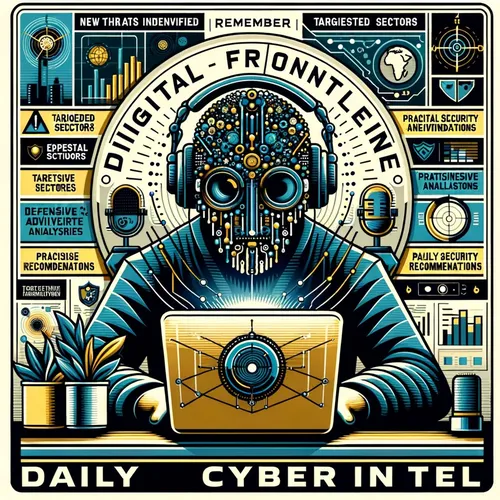Volt Typhoon RSVP'ing Your Network Party: China's Cyber Spies Crash the System
- Author
- Quiet. Please
- Published
- Fri 15 Aug 2025
- Episode Link
- https://www.spreaker.com/episode/volt-typhoon-rsvp-ing-your-network-party-china-s-cyber-spies-crash-the-system--67380654
This is your Digital Frontline: Daily China Cyber Intel podcast.
Hey folks, Ting here on Digital Frontline: Daily China Cyber Intel, your favorite blend of byte-sized chaos and critical insights. It’s August 15, 2025, and—if you thought you could take a summer Friday off from thinking about China’s hackers, well, that’s adorable. Let’s dive into the day’s red-hot intel.
First up, the chatter in DC and cyber ops basements everywhere is all about aggressive precision targeting. According to the Office of the Director of National Intelligence, China is primed for more than just poking at networks; they’re game for full-on cyber campaigns against U.S. critical infrastructure and even military systems to discourage U.S. response in any conflict. The infamous Volt Typhoon group, which you might remember from last year’s headlines, is adapting yet again. Even after multiple FBI takedowns, their bots keep exploiting old software loopholes in U.S. utilities, using sleepy third-party vendors as digital backdoors. Basically, if your control systems are still running Windows XP, Volt Typhoon is RSVP’ing to your network party.
Now, onto the juicy global supply chain intrigue. This week, China’s state media Xinhua threw a digital tantrum over new U.S. tactics of embedding location trackers in advanced chip shipments headed for gray-zone destinations. Reuters broke the news that Washington is secretly slipping trackers into microchips to detect suspicious rerouting—China calls it “chip trade as a surveillance game.” In the same breath, Beijing is warning its own tech giants about backdoors in Nvidia’s H20 chips, suspecting they might be privacy Trojan horses. It’s like a digital episode of Spy vs. Spy—everyone’s nervous their smartphone could be snitching.
Sector spotlight: Chipmakers and finance. Proofpoint’s researchers revealed a multi-front Chinese campaign hammering the Taiwanese semiconductor industry (hi, TSMC and UMC) and even investment analysts at a major U.S. bank. These hackers are getting creative—using spoofed emails from universities and fake investment firms, luring targets with malware-laced PDFs. No word on major breaches yet, but 15-20 organizations are confirmed on the target list.
Meanwhile, underwater, the U.S. Integrated Undersea Surveillance System (IUSS) is now in China’s crosshairs. The plan? Sabotage undersea cables, sensor nodes, even the U.S. Navy’s SURTASS ships with unmanned drones, electronic warfare, and possibly old-school cut-the-cable ops. The U.S. Navy’s Bryan Clark warns it would take serious resources from Beijing—but with hundreds of new PLAN submarines in the water by 2035, the odds are shifting.
For all you cyber defenders, here’s your homework. Prioritize patching legacy systems—Volt Typhoon loves dusty software. Harden physical access to infrastructure and increase multi-factor authentication. If your company is on the supply chain, audit everything—yes, even chips in the break room coffee maker. Anyone handling sensitive intellectual property: Monitor email traffic for fake credentials and carefully check the sender before opening attachments. And remember, security isn’t set-and-forget—run regular drills against phishing, ransomware, and supply chain attacks.
That’s the frontline briefing for today. Thanks for tuning in and don’t forget to subscribe for your daily blast of digital war stories, zero-day nightmares, and—of course—Ting’s unsolicited cyber wisdom. This has been a quiet please production, for more check out quiet please dot ai.
For more http://www.quietplease.ai
Get the best deals https://amzn.to/3ODvOta
